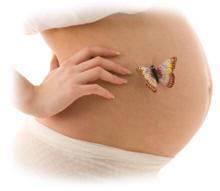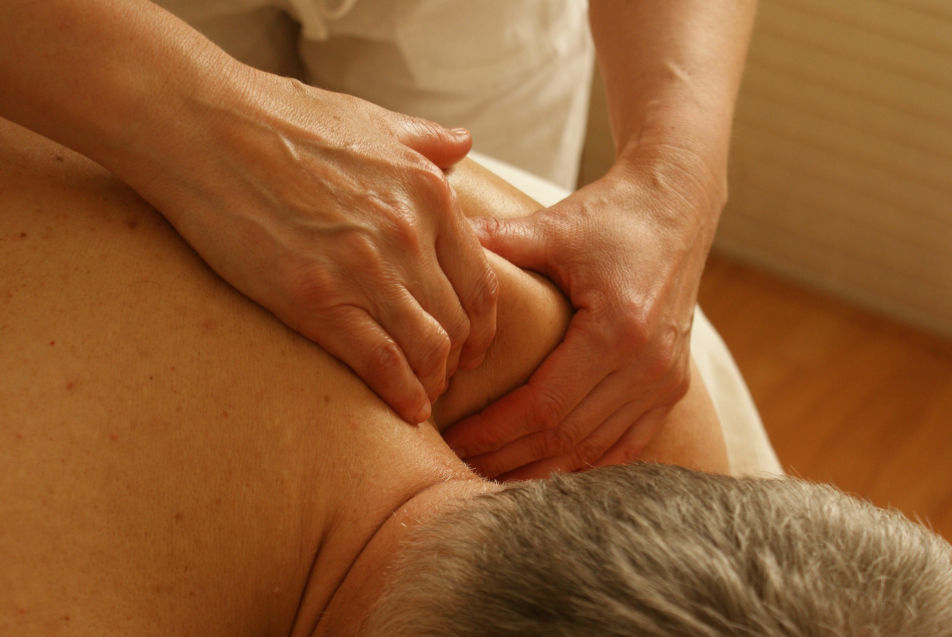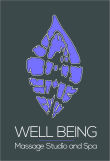A pregnancy massage typically lasts an hour. Some practitioners use a pregnancy massage table. That's a table designed to accommodate a woman's pregnant belly. Others use specially designed pillows called bolsters to position a woman comfortably on her side. This helps especially during the later stages of pregnancy. Lying on your side is often the most comfortable position for pregnancy massage.
Possible Benefits of Pregnancy Massage
There have only been a handful of small studies that focus on massage in pregnancy. And so no definite benefits have been established. But one study at the University of Miami School of Medicine suggests that massage therapy during pregnancy might have multiple positive effects, including:
Lowered anxiety
Decreased back and leg pain
Improved sleep
Decreased levels of the stress hormone norepinephrine
In another study of pregnancy massage in depressed women, researchers found:
increased levels of the "feel-good" hormones serotonin and dopamine
decreased levels of cortisol, an indicator of stress
an overall improvement in mood
Research has shown that, for the general population, massage has other potential benefits. For instance, it may relieve pain, or it may boost the immune system to fight off viruses and tumors.
Safe Techniques for Pregnancy Massage
There are more than 80 types of massage taught in roughly 1,300 massage therapy programs in the U.S. Examples of common types of massage include:
Deep-tissue massage, with firm strokes pressing deep into muscles
Swedish massage, with long strokes to muscles and attention to joint mobility
Shiatsu, with pressure and tapping on acupressure points to stimulate the body's natural energy (called qi)
From a scientific standpoint, the mechanisms that make massage therapy work are still largely unknown. More research is needed to understand how applying different types of manual pressure to the body can:
Relieve pain
Stimulate the release of certain hormones like serotonin
Improve sleep
Promote the physiological response of relaxation
Pregnancy massage experts adapt their techniques to address the changes a woman's body goes through during pregnancy. For instance, blood volume increases dramatically -- as much as 50% -- during pregnancy. Blood flow to the legs often becomes sluggish. And the levels of anticoagulants in the blood -- designed to prevent hemorrhaging during delivery -- naturally rise.
These changes in circulation put a pregnant woman at risk of blood clots in the legs, typically in the calves or inner thigh. To be safe, pregnancy massage experts avoid deep massage and strong pressure on the legs. Using strong pressure could dislodge a blood clot. Instead, they use very light, slow strokes on the legs. Types of massage to avoid on the legs include deep-tissue massage, deep acupressure, shiatsu, cross-fiber friction, and percussive tapping. All leg massage strokes should move toward the heart.
Very light pressure on the abdomen is advised, if the belly is massaged at all. Some massage therapists avoid massaging the abdomen.
Is Pregnancy Massage Safe?
Some doctors hesitate to advise massage during pregnancy because there is a huge variation in training. There is also a lack of certification standards nationwide. This is especially true for the specialty of pregnancy massage. Not all states have laws requiring a set minimum training for a massage therapist, regardless of whether or not the therapist's client is pregnant.
Also, like many forms of complementary medicine, massage therapy during pregnancy hasn't been rigorously studied with high-quality clinical research methods. One area of controversy is whether it's safe to have a massage during the first trimester.
Many massage therapists won't give pregnancy massages during the first trimester. The reason is the potential for miscarriage. Some pregnancy massage experts argue that pregnancy massage doesn't, in itself, cause miscarriage. No research has been done to prove or disprove a direct link between a massage and a miscarriage. Since many miscarriages happen in the first trimester, some massage therapists and doctors advise against first-trimester massage simply to avoid any potential liability issues should a miscarriage occur.
The National Center for Complementary and Alternative Medicine advises all pregnant women to consult with their doctor before trying massage.
When to Avoid Pregnancy Massage
Because the research on pregnancy massage is scant, many Western-trained doctors advise a conservative approach. They may even discourage women from pregnancy massage. There are no scientifically agreed upon guidelines. But be sure you get clearance from your doctor before you try a massage when you're pregnant if:
You're experiencing nausea, vomiting, or morning sickness
You're at high risk of miscarriage
You have a high-risk pregnancy such as placental abruption (where the placenta slightly detaches from the wall of the uterus) or preterm labor
A massage therapist may require written consent from your doctor and a liability waiver from you before performing pregnancy massage.
Most massage therapy training programs require about 500 hours of education. That education may or may not include specific training in pregnancy massage. Continuing education classes and workshops to specialize in pregnancy massage vary widely in terms of how much training and hands-on experience is provided.
Look for a massage therapist through one of the national associations that trains and certifies massage therapists. For example, you could contact the American Massage Therapy Association. Before your first appointment, ask about the therapist's specific training and experience in pregnancy massage. A doctor, midwife, or chiropractor may also be able to recommend a qualified massage therapist in your area.





